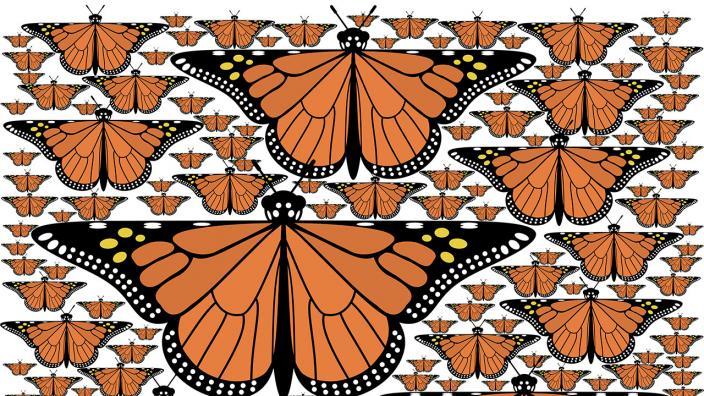Douglas Dunham, professor, Department of Computer Science, along with his colleague John Shier, had their work Fractal Monarchs (detail of image above) honored at the 2017 Mathematical Art Exhibition Awards for best photograph, painting, or print.
The award was given at the Joint Mathematics Meeting in Atlanta, Ga in January "for aesthetically pleasing works that combine mathematics and art.”
Dunham and Shier’s piece, which is a 30 x 40 cm digital print, was one of three works selected from the exhibition of juried works in various media by 73 mathematicians and artists from around the world.
"The goal of our art is to create aesthetically pleasing fractal patterns,” stated Dunham. “This is a fractal pattern whose motifs are monarch butterflies. We modify our usual rule that motifs cannot overlap by allowing the antennas - but not the rest of the butterfly - to overlap another butterfly. For the randomly placed butterflies to exactly fill the rectangular region in the limit, their areas must decrease in size according to a precise formula: the area of the n-th butterfly is given by A/(zeta(c,N)(N+n)^c), where A is the area of the rectangle, and zeta(c,N) is the Hurwitz zeta function. For this pattern c = 1.26, N = 1.5, and 150 butterflies fill 72% of the rectangle."
The Mathematical Art Exhibition Awards were established in 2008 through an endowment provided to the American Mathematical Society by an anonymous donor who wished to acknowledge those whose works demonstrate the beauty and elegance of mathematics expressed in a visual art form.
The American Mathematical Society, located in Providence, R.I., was founded in 1888 to further mathematical research and scholarship.
Visit the Department of Computer Science website.
